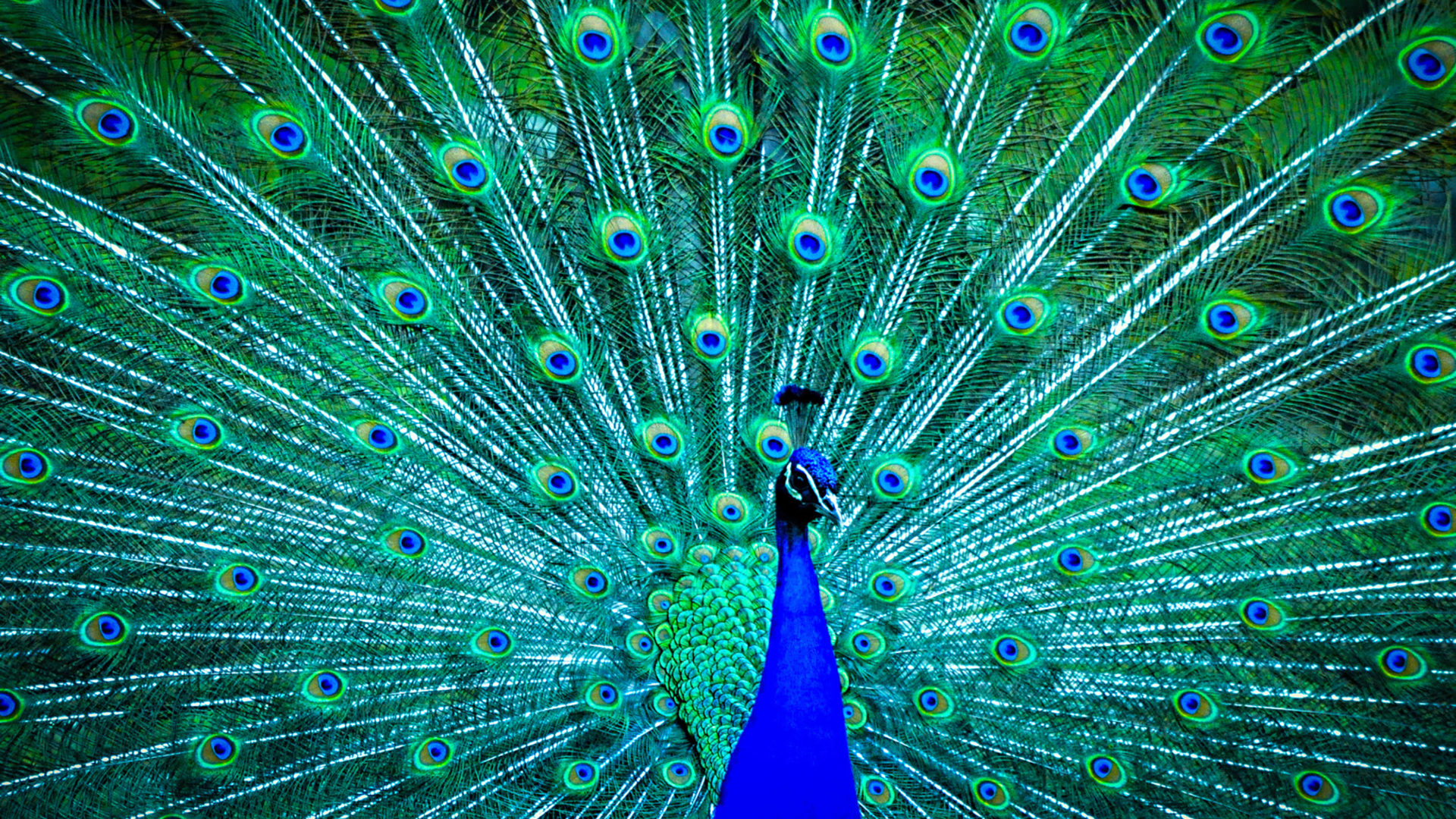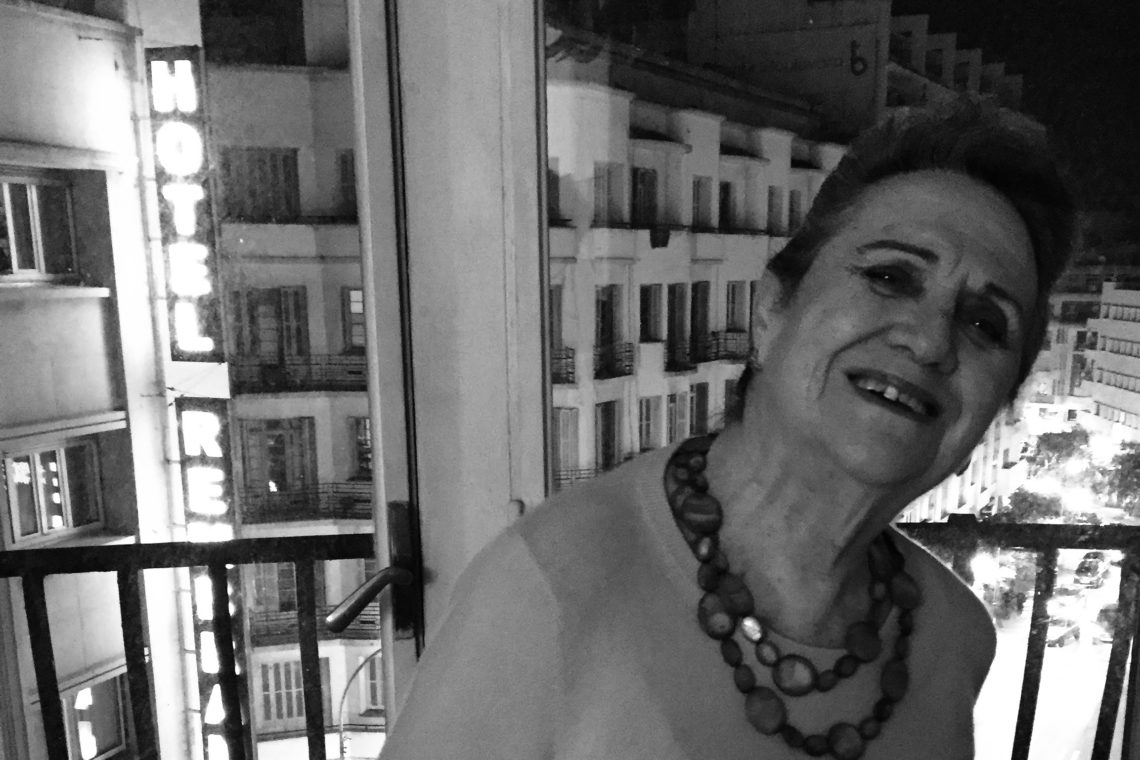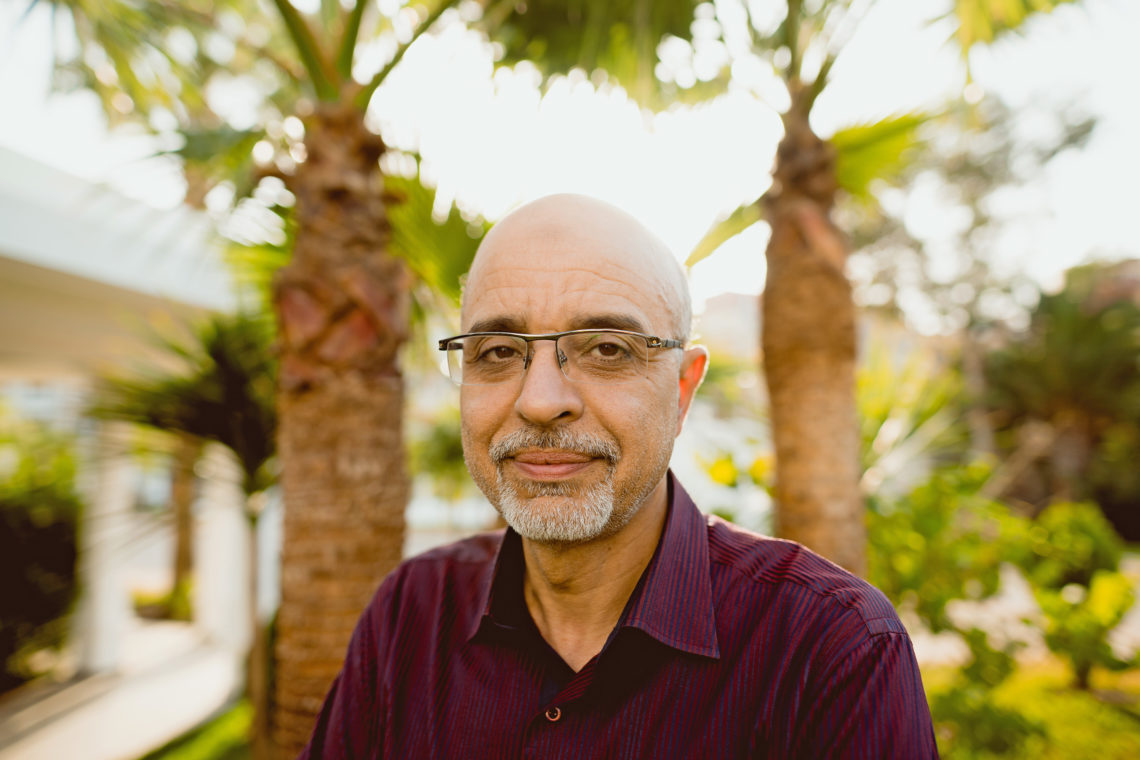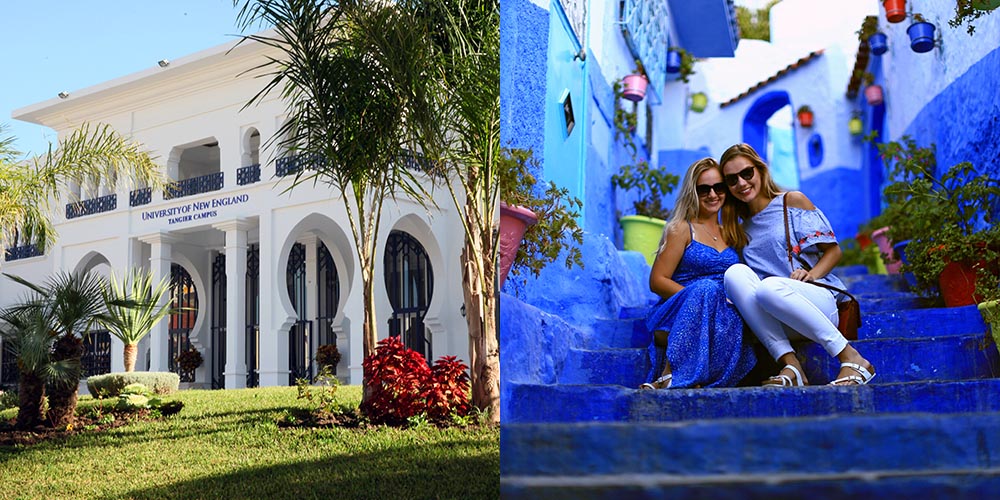When I was 10 years old I lost the person I looked up to most in life, my grandfather. He was the rock of our family, an avid outdoorsman and naturalist who knew all the plants and animals on his farm like the back of his hand. He was known for being a hardworking family man with a puckish sense of humor, always pushing Gram’s buttons. When he was diagnosed with colon cancer, it felt like my world collapsed. Instead of trouncing through the forest with him, I was holding his hand in a stuffy hospital room.
It was spending the greater part of a year in and out of the hospital that sparked my interest in the medical field. I was intrigued by the lingo of the medical care providers; it was as though doctors and nurses had their own language. As my 10-year-old self watched them communicate and discuss the next steps in treating my grandfather, I couldn’t help but want to be a part of that myself one day.
After experiencing first-hand how cancer treatment works in the United States, I wanted to learn more about how it works in Morocco, only to find out it would be nearly impossible to talk to an oncologist or even a patient. The best option presented to me was to speak with a dentist that had a patient who had cancer. I felt defeated. I had no interest in dentistry; and besides how much would a dentist really know about the topic? This is as good as it’s going to get, I told myself. Suck it up, Hannah.
It was a bright, sunny morning as Mourad, our campus manager, took me to meet with the dentist. We stood on the side of the road trying to hail a taxi. Every little blue car zoomed by us at full capacity. After standing at the corner for what seemed like an eternity, a black Volkswagen pulled up. An older man with salt and pepper hair rolled down the window; Mourad’s face lit up. The man in the car said something in Arabic. Mourad turned and motioned for me to get in the back seat while he sat in the front.
“Bonjour,” said the man to me. “Hello,” I replied, shaking his hand. Mourad laughed and explained to the driver that I was an American student and I didn’t speak French. Mourad introduced me to the mystery man, telling me he used to work at the police station with his father.
Within 10 minutes we were in downtown Tangier. Mourad told the man, “this is close enough.” We thanked him and said our goodbyes.
The busy street smelled of cigarette smoke and sewage. We arrived at a grey building that looked like an apartment complex, but with a big tooth-shaped sign bolted to the side. Mourad and I walked up two flights of dusty, dimly lit stairs until we reached a door with another tooth-shaped sign. Entering the dentist office, I felt like Dorothy waking up in Oz. The room was bright and welcoming, the walls were a light green color like the underside of a maple leaf. Behind a high glass reception desk sat a lady dressed in all white.
The receptionist escorted us to a waiting room with comfy black leather seats and a variety of magazines to browse through. A few minutes later, the dentist, Dr. Bouchra Louafi, appeared in a white lab coat. She kissed both my cheeks. She had olive skin, shoulder-length hair and black square-framed glasses. “My English is not good,” she apologized to me. “No, no,” Mourad replied. “You could give a lecture at UNE.” She seemed to blush.
In her office, I took a seat across from her cluttered desk and listened to her story. Dr. Louafi grew up in Rabat with her eight brothers and sisters — her father came from a small family and wanted his children to have lots of siblings. All of her siblings went into the medical field, mostly as doctors and researchers. “I wanted to be different, so I became a dentist,” she said.
After high school, Louafi spent six years in Tunisia studying dentistry while taking philosophy and spirituality courses on the side. After graduating, she went to France to study dental surgery and implantation. Louafi eventually returned to Rabat where she started her career as a dentist. She worked in Rabat for 18 years before moving to Tangier to open her own practice that she’s been running for the past four years.
Aware of her busy schedule, I got to the point by asking her about her patient with cancer. She told me that the first time the woman came in for an examination, she was so weak that her frail body sank into her wheelchair. The woman had had a cancerous brain tumor and after surgery she was unable to walk. She was still traveling three hours every week to Rabat for radiation and chemotherapy. “It was a long, hard process,” Louafi told me.
When the patient later came in to receive dental surgery, Louafi used hypnotism instead of anesthesia.
“Hypnosis!” I didn’t think I was hearing correctly. I pictured her swinging a pocket watch in front of the patient’s eyes to put her under her control.
Louafi assured me that her method wasn’t how I imagined it. She guides patients through a meditation process.
“Why?” I asked.
Louafi prefers this method over traditional anesthesia, I learned, because it lowers the risk factor of reaction with the medications used in anesthesia. It’s also gentler on the “mind and body.”
During the procedure with the cancer patient, the woman was in a half-sleep and able to respond to the dentist. Louafi described the woman’s experience as dreaming while still awake. “I accompanied her in her dream.”
After the oral surgery, Louafi brought the patient out of the hypnotic state. The wheelchair-bound woman, who had been told by other doctors she’d never walk again, exclaimed she could feel her toes!
“What!” I exclaimed.
“That’s right.” For the next few months, Louafi explained, she met with the patient and conducted “séance sessions.” She taught the woman how to train her mind to believe she could walk again. She helped guide her to remember what it felt like to walk and had her picture herself walking and running as she did before brain surgery. After each session, the woman was able to move her legs more and more until she was finally able to walk again.
Louafi didn’t stop there. She began helping the woman strengthen her mind and spirit, so she believed her cancer wouldn’t come back. In Louafi’s words, she “gave orders to her cells to be safe.”
I felt my eyes widen and jaw drop when I heard this. I thought, that’s impossible! But why would a successful dentist make up such a story? Besides, she hadn’t posted the story about this medical miracle on Facebook. I was the one who asked her about the patient.
Louafi must have intuited my inner dialogue because she assured me that many people doubted her story. But she didn’t mind because “she knows the truth.”
Over time, the séance sessions improved the woman’s outlook and her health. The woman would text Louafi after leaving cancer appointments in Rabat to update her on her condition. Her doctors in Rabat were astounded how fast the woman was improving. She was soon in remission.
Sitting there in the office, riveted in place, I wondered if my grandfather would have benefitted from Louafi’s treatment method; maybe he, too, would have gone into remission.
Louafi’s story reminded me of the doctor-patient relationships I observed this past summer working as a phlebotomist at the same hospital where my grandfather was treated. The majority of my day was spent going room to room collecting labs from cancer patients in all different stages of their illness. Some had just been diagnosed, others were going through treatment, and a few were in remission. Over the summer, I witnessed countless doctor-patient interactions. Most of the time a doctor would walk into a patient’s room, glance at their chart, listen to their heart and lungs, give the patient a short synopsis of what was going to happen next, and then move on to the next room. Every time I saw this, which was all-too-often, my stomach turned. These patients were facing one of the hardest times in their life, sometimes completely alone, and they deserved more than five minutes of a doctor’s time. They deserved connection, empathy, and care. Even though Dr. Louafi wasn’t a cancer treatment specialist, she cared. She went above and beyond for her patients.
When I asked Louafi about her favorite part of being a dentist, she began to tear up. “It’s not interesting, looking at teeth all day. It gets boring,” she said with her voice cracking. I looked away from her, unsure if I should continue asking questions. Mourad nodded for me to go on. I looked up to watch Louafi grab a tissue to wipe her tears away.
She told me that spirituality and healing people’s souls were her true calling. She had felt pressure from her family to become a dentist, but it never interested her. Hypnosis was her way of incorporating her passion into her career.
Her raw, intimate confession made me tear up, too. In the medical field, doctors are known for keeping their composure, for being strong and almost detached. Louafi’s humanity shook me to the core.
The more we talked about her interest in spiritual healing, the more her face lit up. She began talking faster and faster, tossing out phrases like “true essence,” “positive waves,” and “spiritual body.”
Many might dismiss Louafi as trafficking in hocus pocus unsupported by data and science. But what she does is what many of the doctors I had seen in the oncology center neglect to do: she connects to her patients as a human and not just a medical professional. She is able to provide a sense of calm and warmth, which I felt just talking to her. “A good doctor,” she said with a wide grin, “is a doctor who heals body and soul.”
Louafi’s assistant knocked on the office door, indicating a patient had arrived. Louafi stood up and accompanied Mourad and me to the lobby. I thanked her for taking the time to talk to me. She reached out and gave me a hug.
On the way back to campus, I noticed a feather on the ground. I instantly thought of the spiritual healing my grandfather received. Towards the end of his battle with cancer, he was moved home. He had accepted that he wasn’t going to get better and wanted to be in the comfort of his home. Two of my grandparents’ friends, members of the Iroquois tribe named Screeching Owl and Standing Bear, offered to do a spiritual healing session.
My grandfather sat in a chair in the middle of his living room, and my entire family circled around him. Screeching Owl passed around drums made from tanned deer hides, and maracas made from hollowed-out snapping turtle shells filled with corn kernels. Standing Bear placed a necklace filled with red tail hawk feathers around my grandfather’s neck. Standing Bear and Screeching Owl began chanting as everyone in the circle played the instrument they were given. Screeching Owl swirled sage smoke around my grandfather to cleanse his spirit.
Throughout the entire session I got goosebumps from the life-affirming energy filling the room. When the session was finished Standing Bear took one of the feathers off of the necklace my grandfather was wearing and told him to carry it with him when he passed into the afterlife. “This feather will guide you.”
Spiritual healing provided my grandfather with a sense of peace. Screeching Owl and Standing Bear saw him as more than a dying cancer patient; they saw him as a spiritual being, something his “scientific” medical providers were incapable of because they cleanly separated the two worlds of medicine and spirituality.
I had to travel all the way to Tangier to find someone — Dr. Louafi — daring enough to blur the line between medicine and spiritual healing.





Comments are moderated by the editor and may not appear on this discussion until they have been reviewed and deemed appropriate for posting. All information collected is handled in a manner consistent with our privacy policy.